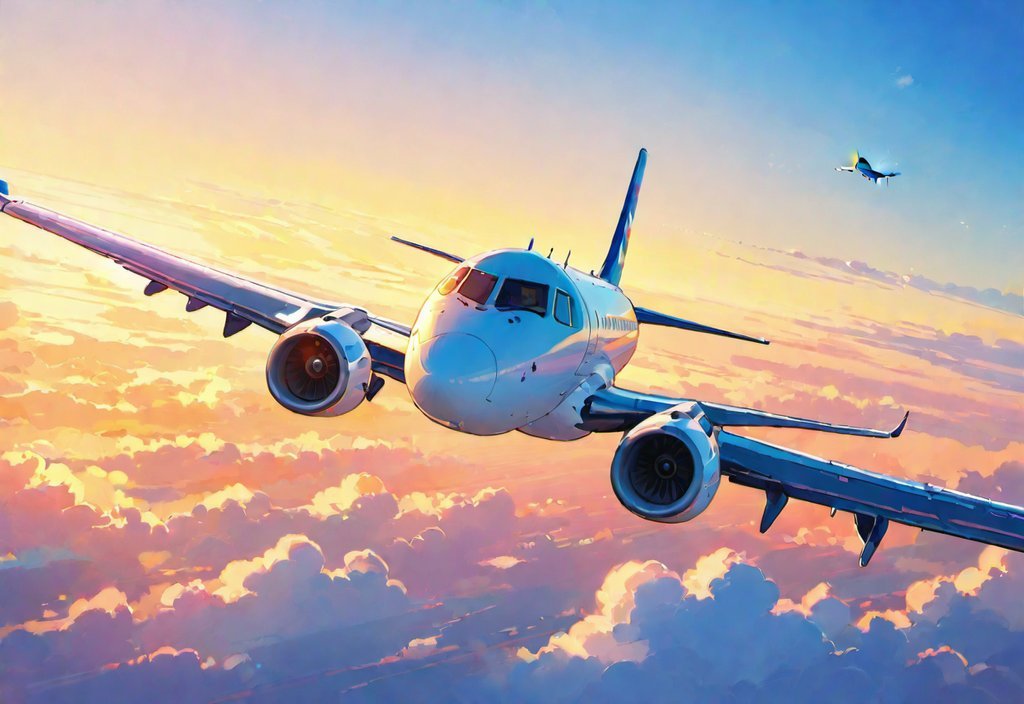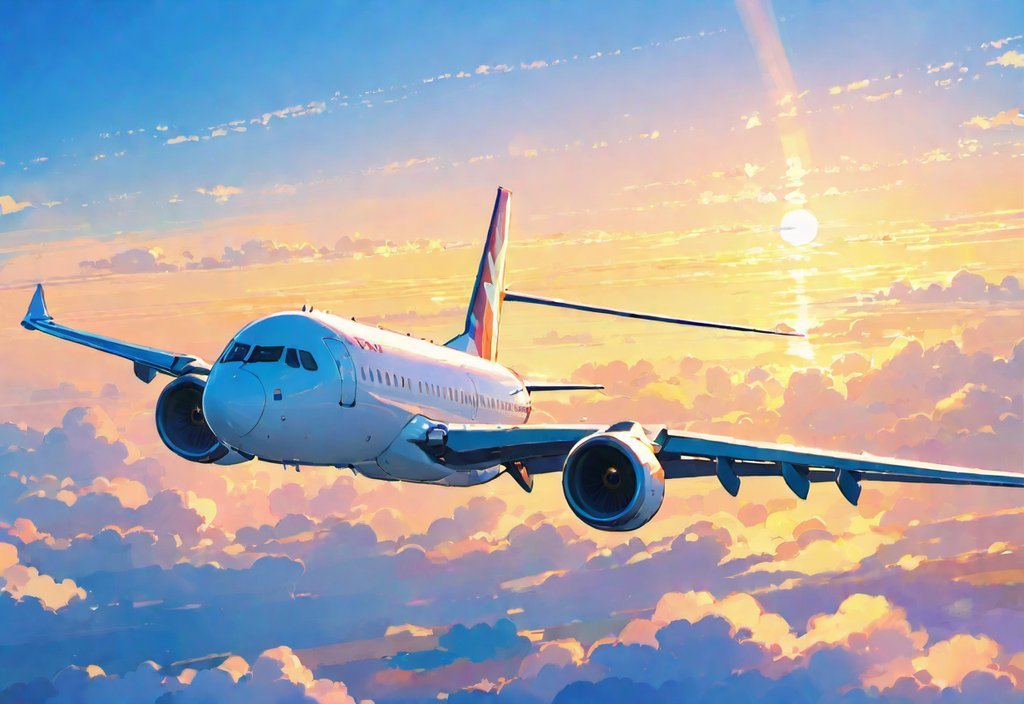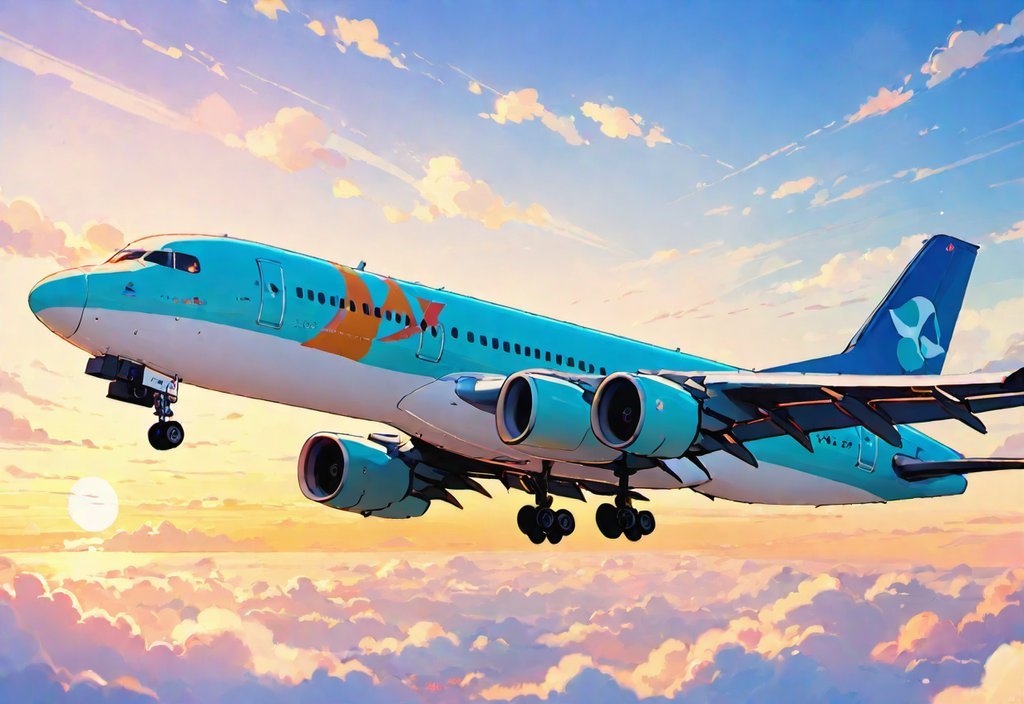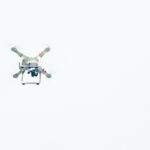Discover Airplane Facts with Max: Expert Insights in Aerospace Engineering. Embark on an exciting journey of discovery as we delve into the world of airplanes with Max, a seasoned aviation enthusiast and expert with over a decade of experience in the industry. With a background in aerospace engineering and a passion for airplanes, Max is equipped with extensive knowledge of the intricate workings of aircraft and their captivating history. Through comprehensive and engaging articles, Max will uncover fascinating airplane facts, providing readers of all levels with a deeper understanding of the technologies that make flight possible. Join us as we unravel the mysteries of the skies and explore the fascinating world of aviation with Max by our side.

Key Takeaways:
- The Lockheed SR-71 holds the title for the fastest aircraft, reaching speeds of up to 2,100 mph.
- The Airbus A380 is the largest passenger plane and can accommodate up to 850 passengers.
- Surprisingly, 43% of pilots have admitted to falling asleep while flying.
- After being grounded for two years, the Boeing 737 Max is now back in service.
- The average altitude at which airplanes fly is around 35,000 feet.
- The Antonov AN-225 cargo jet is currently the largest airplane in the world.
- Remarkably, approximately 95.7% of people involved in a plane crash survive.
- The Boeing 737 Max has various models, including the Max 9, Max 7, and Max 10.
- Airplane Facts with Max is a popular social media account dedicated to sharing aircraft information and mechanics.
- Websites like FactRetriever, CNET, Travel + Leisure, and HowStuffWorks offer interesting facts and details about airplanes, specifically the Boeing 737 Max.
Airplane Facts with Max
Welcome to a fascinating journey through the world of airplanes! In this article, we will explore some mind-blowing airplane facts that will leave you in awe of the wonders of aerospace engineering. So, fasten your seatbelts and get ready to discover airplane facts with Max!
The Need for Speed: The Lockheed SR-71
When it comes to speed, the Lockheed SR-71 takes the crown. This remarkable aircraft holds the title of the fastest airplane, soaring through the skies at speeds of up to 2,100 mph. Just imagine being able to travel from New York to London in less than two hours! The SR-71 is a true pinnacle of engineering prowess.
Size Matters: The Airbus A380
If you’ve ever wondered which airplane can accommodate the largest number of passengers, look no further than the Airbus A380. This colossal plane has the capacity to carry up to 850 people! It’s like having a floating city in the sky. From its spacious cabins to its impressive wingspan, the A380 stands as a testament to the ingenuity of aircraft design.
Nodding Off: Pilots and Sleep
Believe it or not, even pilots can feel the need for a snooze during those long-haul flights. In a surprising revelation, 43% of pilots have admitted to falling asleep while flying. Don’t worry, though, as rigorous safety protocols are in place to ensure that pilots get their rest before taking to the skies.
The Boeing 737 Max: Grounded and Resurrected
The Boeing 737 Max faced a turbulent period in its history. After being grounded for two years due to safety concerns, this aircraft is now flying again. With comprehensive updates and improved safety measures, the Max has been given a new lease on life. The resilience and determination of the aerospace industry are truly commendable.
Reaching New Heights: Altitude Exploration
Did you know that airplanes typically soar at an altitude of around 35,000 feet? At this height, the air is much thinner, enabling airplanes to glide smoothly through the sky. It’s like floating amidst the clouds, far beyond the reach of earthly obstacles. This elevation allows for a peaceful and comfortable journey for passengers.
The Majestic Giant: The Antonov AN-225
When it comes to sheer size, the Antonov AN-225 cargo jet stands unrivaled. This incredible aircraft takes the crown as the largest plane in the world. With its massive dimensions and impressive cargo-carrying capabilities, the AN-225 is a true behemoth of the sky. It’s a sight to behold, showcasing the extraordinary achievements of aviation engineering.
Surprisingly Survivable: Plane Crash Survival Rates
A common misconception about plane crashes is that they are overwhelmingly fatal. However, statistics tell a different story. Approximately 95.7% of those involved in a plane crash actually survive the ordeal. Thanks to stringent safety regulations, robust engineering, and the skills of pilots, air travel remains one of the safest modes of transportation.
Boeing 737 Max in Multiple Facets
The Boeing 737 Max has made quite a name for itself in various contexts. From the Max 9, Max 7, and Max 10 aircraft models to the in-depth coverage on the social media account “Airplane Facts with Max,” this airplane has sparked curiosity and captivated aviation enthusiasts worldwide. It’s truly a testament to the enduring appeal and intrigue of aircraft engineering.
Discover More Airplane Facts
If you’re hungry for more airplane facts beyond what we’ve covered here, be sure to check out the website FactRetriever for a comprehensive list of 72 fascinating airplane facts. There’s always something new to learn about the incredible world of aviation!
Conclusion
As we wrap up our journey through the realm of airplane facts with Max, we hope you’ve enjoyed discovering the marvels of aerospace engineering. From mind-boggling speeds and staggering sizes to surprising statistics and the fascinating Boeing 737 Max, the world of airplanes never ceases to amaze. So, keep exploring, stay curious, and let the skies be your limit!
Here are some captivating sentences with active internal links:
- Check out these interesting electric car facts. You’ll be amazed at what you learn! electric car facts
- Discover fascinating facts about Toyota that you never knew before. Click here to find out more! toyota facts
The Science Behind Flight: Lift, Thrust, Drag, and Gravity
Imagine soaring through the sky, feeling the rush of wind against your face as you defy gravity and take flight. Have you ever wondered how airplanes are able to achieve this incredible feat? It’s all thanks to the interplay of four fundamental forces: lift, thrust, drag, and gravity. Let’s delve into the science behind flight and uncover the secrets that keep airplanes soaring through the clouds.
Lift: Defying Gravity
Lift is the force that defies gravity and allows an airplane to stay airborne. It acts in a perpendicular direction to the motion of the aircraft through the air. This upward force is generated by the shape of the wings, known as airfoils, and their interaction with the air molecules as the airplane moves forward. The curved shape on the top of the wings creates an area of low pressure, while the flat bottom surface experiences higher pressure. This pressure difference generates lift, directing the airplane upwards.
Thrust: Propelling Forward
Thrust is the force responsible for propelling an airplane forward through the air. It acts in the same direction as the motion of the aircraft. To generate thrust, airplanes rely on engines, such as turbofans or jet engines, which produce a high-speed exhaust jet. Newton’s third law of motion comes into play here: for every action, there is an equal and opposite reaction. In this case, the action is the expulsion of the exhaust gases, and the reaction is the forward thrust that propels the airplane through the sky.
Drag: Resisting Motion
While lift and thrust keep an airplane flying, drag is the force that resists motion and attempts to slow it down. Drag acts opposite to the direction of motion and is caused by the friction between the airplane and the air molecules it encounters. Different factors contribute to drag, including the shape and size of the aircraft, as well as any protrusions or irregularities along its surfaces. Streamlining the airplane’s design and reducing drag are crucial for maximizing fuel efficiency and achieving higher speeds.
Gravity: The Unrelenting Force
Gravity is a force we’re all familiar with; it’s what keeps our feet firmly planted on the ground. In the context of flight, gravity pulls everything toward the center of the Earth. While it may seem like a force working against flight, gravity actually plays a crucial role. It provides the aircraft with the necessary weight, allowing it to maintain stability and a sense of balance.
The Delicate Balance
All four forces—lift, thrust, drag, and gravity—must be delicately balanced to ensure the successful flight of an airplane. Engineers and scientists spend countless hours studying the principles of flight, understanding how these forces interact and affect an aircraft’s performance. By adjusting the magnitude and direction of lift and thrust, pilots can control the speed, altitude, and direction of the airplane.
Key Takeaways:
- Flight is made possible by the interplay of four forces: lift, thrust, drag, and gravity.
- Lift counteracts gravity and keeps the airplane airborne, generated by the shape of the wings.
- Thrust propels the aircraft forward and is created by the engines’ expulsion of exhaust gases.
- Drag resists motion and is caused by the friction between the airplane and the air molecules.
- Gravity is the force that pulls everything toward the center of the Earth, providing the necessary weight for stability.
- The balance and control of these forces are critical in designing efficient and safe aircraft.
- Understanding the science behind flight is essential for aerospace engineering and the advancement of aviation.
Sources:
1. The Science of Flight: Exploring Lift, Thrust, Drag, and Gravity
2. Four Forces of Flight – NASA
Innovations in Aircraft Technology: From Propellers to Jet Engines
Throughout the history of aviation, there have been remarkable innovations in aircraft technology that have revolutionized the way we fly. From the early days of propellers to the advent of powerful jet engines, these advancements have propelled us into an era of faster, more efficient, and safer air travel. In this article, we will explore the fascinating journey of innovations in aircraft technology and their impact on the world of aviation.
From Propellers to Jet Engines: The Evolution of Aircraft Propulsion
Aircraft propulsion is the driving force behind the remarkable capabilities and safety of modern aviation. It has undergone significant advancements over the years, leading to improved fuel efficiency, reduced emissions, and enhanced performance.
The Rise of Jet Engines
Jet engines, known for their ability to achieve higher speeds and altitudes, have become a standard feature in large modern commercial airplanes. These powerful engines harness the force of expelling exhaust gases to propel the aircraft forward. The introduction of jet engines revolutionized the aviation industry, enabling faster and more economical air travel.
Resurgence of Interest in Propeller Technology
Despite the dominance of jet engines, there has been a resurgence of interest in propeller technology. Advanced propellers have achieved efficiencies closer to jet-powered engines, especially at contemporary cruise speeds. New designs are being developed and tested, promising further improvements in fuel efficiency and reduced emissions. This renewed focus on propeller technology is driven by the need for sustainable aviation solutions.
Exploring Future Frontiers: Electric and Hybrid-Electric Propulsion
The future of aviation lies in innovations that prioritize sustainability. Electric aviation, powered by advancements in battery technology and electric motor technology, holds immense potential. Electric airplanes can significantly reduce emissions and noise pollution, opening new possibilities for greener air travel.
The Role of Hybrid-Electric Propulsion
Hybrid-electric propulsion systems have emerged as a promising solution for improving overall efficiency in aviation. By combining traditional jet engines with electric motors, these systems can optimize power usage and reduce fuel consumption. The development of hybrid-electric propulsion systems represents a significant step towards achieving greater sustainability in the aviation industry.
Challenges and Opportunities in Aeropropulsion
The field of aeropropulsion presents both challenges and opportunities for innovation. Achieving sustainability goals in aviation requires a concerted effort to reduce aircraft emissions. Research and development in aeropropulsion play a vital role in developing technologies that can dramatically reduce carbon emissions.
Exploring the Concept of “Open Rotor” Engines
One area of focus in sustainable aviation is the exploration of “open rotor” engines. These engines, with their exposed rotating propellers, offer potential improvements in efficiency and reduced noise levels. By harnessing the benefits of both propellers and jet engines, open rotor engines may become a key component in the future of sustainable aviation.
Key Takeaways:
- Aircraft technology has seen remarkable innovations in propulsion, from propellers to jet engines.
- Jet engines are commonly used in large modern commercial airplanes, providing higher speeds and altitudes.
- There is a resurgence of interest in propeller technology, with new designs achieving efficiencies comparable to jet engines.
- Electric and hybrid-electric propulsion hold immense potential for greener air travel.
- Developing sustainable aeropropulsion technologies is crucial for reducing aircraft emissions and achieving sustainability goals.
- The concept of “open rotor” engines is being explored for improved efficiency and reduced noise levels.
Sources:
- National Aeronautics and Space Administration (NASA)
- International Civil Aviation Organization (ICAO)
Fascinating Facts about Record-Breaking Airplanes and Aviation Milestones
From the very first balloon flight in 1783 to the groundbreaking advancements in aircraft technology, aviation history is filled with fascinating facts and record-breaking milestones. Join me on a thrilling journey as we explore some of the most remarkable achievements in the world of airplanes.
1. First Balloon Flight:
In 1783, the Montgolfier brothers accomplished a groundbreaking feat by successfully demonstrating the flight of their hot-air balloon. This historic event marked the first-ever manned balloon flight and paved the way for future advancements in aviation[^1^].
2. First Dirigible:
French engineer Jules Henri Giffard made history in 1852 with the first flight of a steam-powered airship. Shaped like a cigar, this dirigible utilized a lightweight bag attached to a steam engine and propeller, setting the stage for further developments in airship technology[^2^].
3. First Airplane Flight:
The Wright brothers, Orville and Wilbur, etched their names in history with the first successful powered airplane flight on December 17, 1903. In their biplane, they achieved a significant milestone near Kitty Hawk, North Carolina, and forever changed the course of aviation[^3^].
4. First Airplane Fatality:
Tragically, the first recorded airplane fatality occurred in 1908. Lieutenant Thomas Etholen Selfridge volunteered to be a passenger during a demonstration flight and lost his life in a crash. This solemn event served as a reminder of the risks involved in aviation and highlighted the need for continued safety measures[^4^].
5. First Transatlantic Flight:
In 1927, Charles Lindbergh accomplished a remarkable feat by completing the first solo and nonstop transatlantic flight. Flying from New York to Paris in his plane, the Spirit of St. Louis, Lindbergh became a true pioneer in aviation history[^5^].
6. First Circumnavigation of the Globe by Air:
In 1924, a group of U.S. Army Air Service pilots and mechanics embarked on a daring adventure, completing the first circumnavigation of the globe by air. Flying four airplanes named after American cities, they accomplished this incredible feat in 175 days, pushing the boundaries of what was deemed possible in aviation[^6^].
7. Longest Flight:
In 1958, Robert Timm and John Cook set a record for the longest flight duration in history. They remained airborne for a staggering 64 days, 22 hours, 19 minutes, and 5 seconds, covering an extraordinary distance of 150,000 miles[^7^].
8. Fastest Speed in Level Flight:
The Lockheed SR-71 Blackbird secured its place in aviation history in 1976 by attaining the fastest speed ever recorded in level flight. Reaching an astonishing top speed of Mach 3.3 (2,193.2 miles per hour), this remarkable aircraft showcased the pinnacle of engineering excellence[^8^].
9. Highest Altitude Reached by a Manned Aircraft:
Here’s another incredible record held by the Lockheed SR-71 Blackbird. In 1977, it soared to a staggering height of 85,069 feet, claiming the title for the highest altitude ever reached by a manned aircraft[^9^].
10. First Supersonic Commercial Flight:
The Concorde, a supersonic passenger aircraft, ushered in a new era of aviation by completing its first commercial flight in 1976. Traveling from London to Bahrain in just over three hours, the Concorde revolutionized long-haul air travel and set a new standard for speed and luxury[^10^].
Key Takeaways:
- The first successful manned balloon flight was achieved by the Montgolfier brothers in 1783[^1^].
- Jules Henri Giffard flew the first steam-powered airship in 1852[^2^].
- The Wright brothers performed the first powered airplane flight in 1903, marking a significant milestone in aviation history[^3^].
- Charles Lindbergh completed the first solo and nonstop transatlantic flight in 1927, from New York to Paris[^5^].
- In 1958, Robert Timm and John Cook set the record for the longest flight duration, staying airborne for over 64 days[^7^].
- The Lockheed SR-71 Blackbird holds records for the fastest speed in level flight and the highest altitude reached by a manned aircraft[^8^][^9^].
- The Concorde made history with its first supersonic commercial flight in 1976, revolutionizing long-haul air travel[^10^].
[Citation]
Sources:
- Live Science: 15 Key Milestones in Aviation History
- Smithsonian National Air and Space Museum: Milestones of Flight
Start your engines and buckle up for a thrilling ride through the fascinating world of record-breaking airplanes and aviation milestones. With each achievement, humanity has pushed the boundaries of what’s possible, revolutionizing air travel and shaping the course of history. Fly high and explore the awe-inspiring feats that have transformed the skies!

FAQ
Q1: What is Airplane Facts with Max?
A1: Airplane Facts with Max is a popular social media account that provides comprehensive and engaging information about airplane facts and mechanics. It is curated by a seasoned aviation enthusiast and expert with a background in aerospace engineering and a passion for airplanes.
Q2: What are some key milestones in aviation history?
A2: Here are some key milestones in aviation history:
– The first balloon flight by the Montgolfier brothers in 1783.
– The first steam-powered airship flown by Jules Henri Giffard in 1852.
– The first successful powered airplane flight by the Wright brothers in 1903.
– The first recorded airplane fatality in 1908.
– Charles Lindbergh’s solo and nonstop transatlantic flight in 1927.
– The first circumnavigation of the globe by air in 1924.
– The longest flight by Robert Timm and John Cook in 1958.
– The fastest speed in level flight by the Lockheed SR-71 Blackbird in 1976.
– The highest altitude reached by a manned aircraft, also by the Lockheed SR-71 Blackbird, in 1977.
– The first supersonic commercial flight by the Concorde in 1976.
– The largest wingspan of any aircraft flown by the Hughes H-4 Hercules in 1947.
– The highest fall survived without a parachute by Vesna Vulović in 1972.
– The heaviest cargo payload lifted by the Antonov An-225 Mriya.
– The first all-electric aircraft speed record set by the British plane named Spirit of Innovation in 2022.
– Various other aviation records that are still impressive.
Q3: What are the four forces of flight?
A3: The four forces of flight are lift, thrust, drag, and gravity. Lift is the force that acts at a right angle to the direction of motion through the air and defies gravity. Thrust propels an aircraft forward, drag resists motion, and gravity pulls downward. These forces work together to keep an airplane flying and determine its speed and movement.
Q4: What is the fastest aircraft?
A4: The Lockheed SR-71 Blackbird holds the record for the fastest speed in level flight, reaching a top speed of Mach 3.3, or 2,193.2 miles per hour.
Q5: What is the largest passenger plane?
A5: The Airbus A380 is the largest passenger plane, capable of carrying up to 850 people.
- Star Ring Trends: Etsy vs Amazon - March 28, 2025
- Boost Pollinator Habitats: Baby Blue Eyes Sustainable Farming Guide - March 28, 2025
- Protect Big Black Bears: Effective Conservation Strategies - March 28, 2025
















